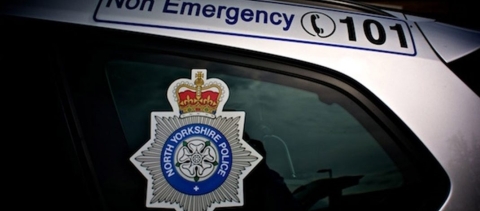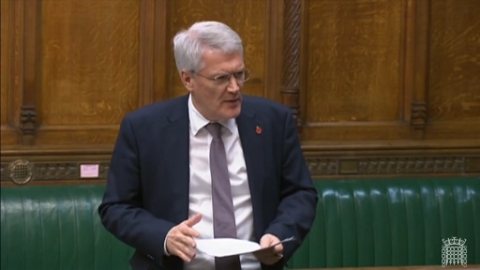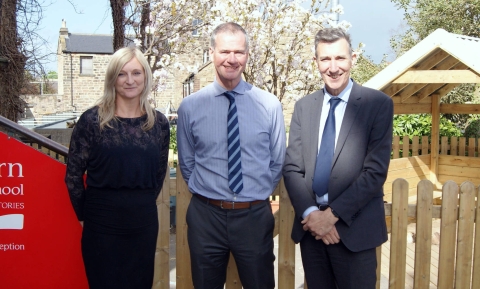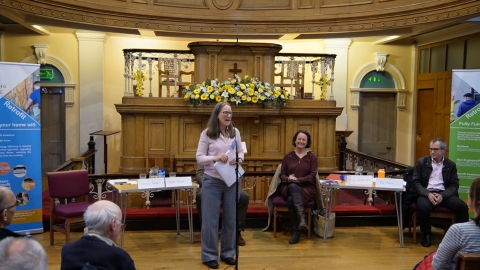NYCC has recently published a draft Carbon Reduction Plan, which will be discussed at a Council meeting on Tuesday, 14 July.
Zero Carbon Harrogate have prepared and submitted comments on this plan to Councillors representing the Harrogate District.
To read Draft Carbon Reduction Plan
A spokesperson for Zero Carbon Harrogate said:
Zero Carbon Harrogate welcomes the publication of the NYCC Carbon Reduction Plan, particularly in the light of the short timeframe to the 2030 carbon net zero ambition of NYCC. It contains many appropriate and prudent initiatives to reduce the emissions of the County Councils own estate over the next three years.
However, the Plan gives no indication of the likely carbon emission reductions or the cost benefit of each action proposed. Nor does it provide a pathway to net zero in 2030, leaving questions about how progress towards this objective will be measured, monitored and delivered.
The Plan, almost exclusively, discusses decarbonising the NYCC’s own estate, with no mention of the significant decarbonisation impact that the NYCC can leverage as a policy maker.
This is a major omission from the action plan, as NYCC is the policy gatekeeper for many infrastructure changes that can unlock decarbonisation across the County, particularly for transport. This is also where there are likely to be the greatest low cost/high carbon reduction wins.
Also, little attention is given to the ability for NYCC to act as an influencer. Through better communication, sharing of good practice and visible leadership, local businesses and residents will follow NYCC’s lead.
Detailed comments by Zero Catbon Harrogate on individual elements of the plan.
Zero Carbon Harrogate Comments on NYCC Carbon Reduction Plan, July 2021
Summary
We welcome the publication of the NYCC Carbon Reduction Plan, particularly in the light of the short timeframe to the 2030 carbon net zero ambition of NYCC. It contains many appropriate and prudent initiatives to reduce the emissions of the County Councils own estate over the next three years.
However, the Plan gives no indication of the likely carbon emission reductions or the cost benefit of each action proposed. Nor does it provide a pathway to net zero in 2030, leaving questions about how progress towards this objective will be measured, monitored and delivered.
The Plan, almost exclusively, discusses decarbonising the NYCC’s own estate, with no mention of the significant decarbonisation impact that the NYCC can
leverage as a policy maker. This is a major omission from the action plan, as NYCC is the policy gatekeeper for many infrastructure changes that can unlock decarbonisation across the County, particularly for transport. This is also where there are likely to be the greatest low cost/high carbon reduction wins.
Little attention is given to the ability for NYCC to act as an influencer. Through better communication, sharing of good practice and visible leadership, local businesses and residents will follow NYCC’s lead.
Detailed Comments
1.0 Our vision and ambitions
1.1 While the ambition is for North Yorkshire to be a thriving county, which adapts to climate change, the rest of the ambition only talks about NYCC’s own estate, rather than how it could use its influence to effect change across the county.
1.4 This plan only sets out progress to date, two years since the carbon net zero motion of July 2019, and for the next three years. No scoping to deliver the 2030 carbon net zero target seems to have been conducted.
1.5 We welcome the integration with the Council Plan and the annual review.
What metrics will be used to measure progress?
1.7 We agree that national government support for decarbonisation is required. What advocacy work has to date been conducted, by the council leaders, to secure national policy change that will assist the Yorkshire region to cut emissions?
3.0 Our Carbon Footprint
3.4 The carbon reductions from 2015/16 are encouraging. How much is this reduction due to the decarbonisation of the national electricity grid and how much directly related to NYCC carbon reduction measures?
3.5
Retaining some of the change of practice due to the pandemic, that helped to reduce carbon emissions, would be wise.
3.6 Given that NYCC have committed to be carbon neutral by 2030, why does the chart show predicted emission to 2035?
3.11 We welcome the recognition of the complexity of carbon reduction and the need for carefully considered data driven decision making.
4.0 What we have achieved so far
4.1 The rationalisation of property is a good starting point
4.2 Energy: The 25% energy reductions are commendable and always the first step to take before renewable generation.
4.3 Are the local authority schools included or not, this seems to vary through the document?
4.5 Procurement. More could be made of the opportunity to leverage change in supply chain related carbon emissions through the significant purchasing power of NYCC. For example, establishing a renewable electricity contract for all the NYCC schools.
4.6 Waste Management. Whilst the high levels of waste reuse, recycling and composting are commendable, Allerton Waste Recovery Park remains one of the highest carbon dioxide emitters in the county, as a result of its incineration process. There are no details of how NYCC will reduce the overall volume of waste and consequently cut incineration and embedded carbon emissions.
4.8 Schools: The school meal policy has the feel of a healthy diet policy and does not directly mention low carbon emissions from farm to fork. This is an area where significant awareness raising and influence in procurement could be exercised.
4.9 Buy Local: This is a very positive initiative. Other proactive creative solutions such as introducing a Yorkshire Pound would encourage local purchasing, thereby reducing transport emissions and helping to grow the local economy.
5.0 Future Actions
5.1 These steps are welcome. What data are NYCC using to measure and
track their carbon emissions and the emissions for the County as a whole?
5.2 It is good to hear that NYCC have been engaging with partners. Has any public consultation taken place? Or any consultation with local community groups who hold local knowledge and influence?
6.0 What we need to do next to reduce our carbon footprint
A commendable list of actions to reduce carbon emissions, generate renewable electricity and heat and sequester carbon over the next three years for the NYCC estate.
No details of likely carbon emission reductions are supplied. How will the success of these strategies be measured? How far will these measures take
NYCC towards the net zero by 2030 target?
These measures only look to decrease the emissions from the NYCC estate, not use their policy making powers to reduce emissions across the whole district. For example, as the highways authority in a county with above average carbon emissions from transport, improvements in infrastructure for active travel and public transport should be a key policy in the carbon reduction strategy.
7.0 Other areas of work to reduce wider carbon emissions and negative impacts on the environment
7.1 Solar Energy: Proactive action to support local energy generation is welcomed. For example, NYCC could use capped land fill sites to locate solar generation facilities. If this was done in collaboration with a community energy company or micro grid, local energy costs could fall, benefiting the local economy.
7.2 Procurement: The proposal to leverage carbon reductions through the supply chain is welcomed.
7.3 Brierley Group Companies: These steps are welcomed. Best practice should be demonstrated by all these NYCC companies to be an exemplar in carbon management for other local businesses. For example, passive
house building standards for Brierley Homes.
7.4 Green Homes: This is good to hear, both for carbon reduction and to reduce fuel poverty for residents.
7.5 Electric vehicles and charging infrastructure: This is welcome. Is work being done to coordinate with commercial players in the EV charging infrastructure market?
7.6 Cycling and walking: We welcome these. However, these plans need to be wider than active travel, looking at the whole journey options in a locality (car use, car clubs, buses and trains) and seeking to put in place decarbonising travel infrastructure (i.e., Travel Infrastructure Plans).
7.7 Highway verges: Increasing biodiversity in verges is very welcome. Vegetation on verges also offers opportunities for carbon capture and storage and the possibility of bio gas generation from grass cuttings.
7.8 Schools: While awards for schools are nice, greater support could be given to school governors and managers in how to decarbonise their premises.
7.10 Circular economy ambition: This is a welcome initiative.
7.11 Communication campaigns: This item does not receive enough attention in this plan. NYCC has a significant opportunity to influence business and local communities. To date the communication of the carbon reduction actions that have taken place have been minimal. More resources and a much more proactive approach used in sharing the success stories is needed, if NYCC’s leadership is to have influence across the County.
8.0 How will we know, and review, how we are doing?
What metrics will be used to measure success? How often will reporting be to the whole council?







What a load of crap just another way of waisting time and public money and not consulting the people or allowing them to be heard just get another job but no this job pays to much and it’s got perks
Just another day at the office